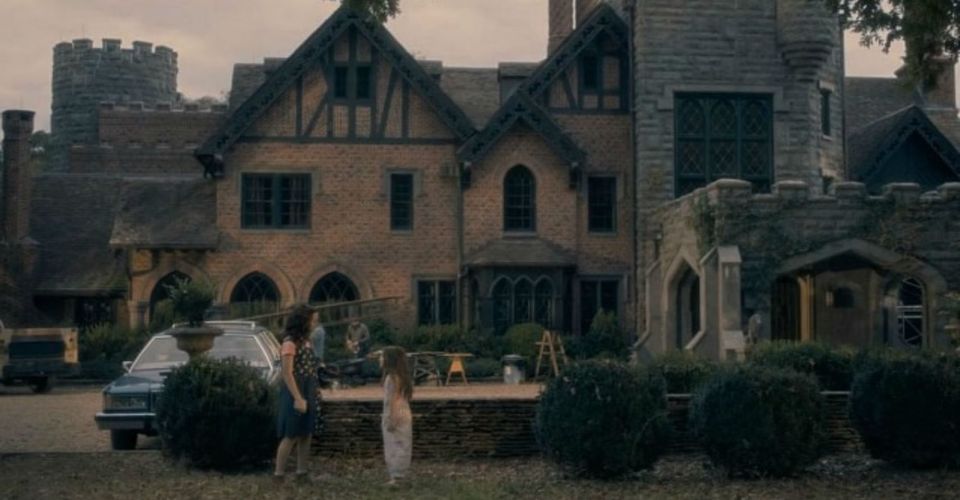5 Ways Haunting Of Hill House TV Show Is Better Than The Book (& Five Ways It Isn’t)

The Haunting Of Hill House dropped on Netflix in 2018. Based on the 1959 Shirley Jackson novel of the same name, the show at its core is about a very haunted house. However, the show deviates quite a bit from the novel. Where the novel follows a group of people spending time in Hill House as part of an experiment, the show follows the Crain family as they experience the haunting as children and deal with the ramifications of that haunting as adults.
Both mediums have been praised as masterpieces of horror. The book has been adapted twice for the silver screen. The show will drop a second season this year. There are certain things that the show did better than the book, and certain things that make the book unbeatable.
10 TV Show: Family Plot Line

Though the family moving into a haunted house that they can’t leave for financial reasons trope has been done before, it doesn’t make it less effective. In the book, it’s a group of strangers who experience Hill House, and they are there at the behest of a doctor conducting an experiment to find evidence of the supernatural. The experiment aspect gives it a clinical feel and makes it harder to relate to the situation.
In the show, the Crain family moves to Hill House to remodel it and resell it. Each member of the family: parents Hugh and Olivia, and children Steven, Shirley, Theodora, Luke, and Nell, has encounters with the ghosts of Hill House and each of them deals with it in their own way. Audiences can relate to the tension between the siblings and between the children and their father as they deal with how the haunting has affected their lives.
9 Book: More Atmospheric

One of the virtues of the book is that its horror and tension are atmospheric. The scares come not from blatant gore or detailed descriptions of ghosts, but from misplaced items, writing on the wall, and the sound of knocking filling the house.
As the characters in the book, especially the ill-fated Eleanor, become more and more frightened of their environment, so do the readers. Given that the show has the advantage of being a visual medium, it would have made the show creepier if it followed the book’s lead. Additionally, Jackson’s prose shines best in these moments of playing up the subtle horrors.
8 TV Show: Exploration of Mental Illness

Though the show goes out of its way to emphasize that the Crain family were haunted and not suffering from shared psychosis, it does a good job showing how traumatic events can lead to things like addiction, depression, anxiety, sleep paralysis, and more. The most effective situation being the tragic story of Nell, who spent most of her life in a state of anxiety after the loss of her mother and the ghost of a “bent-neck lady” who haunted her at Hill House.
Nell’s sleep paralysis is an extension of her anxiety, and director Mike Flanagan does a brilliant job showing how out of control one could feel at that moment. Additionally, it shows the danger of dismissing situations and trauma as just mental illness, as in the case of the oldest Crain child, Steven.
7 Book: More Explanation Of The House’s Origins

Though the show presents a layered approach to the haunting, adding more and more ghosts of people who lived or worked in the house to the mix, the book does a better job of exploring the house’s origins. Built by Hugh Crain, Hill House also claimed the lives of his wife and children, and several other people after that.
Though the show parses out information about some of the ghostly inhabitants, there are still so many of them that appear on screen who are not accounted for. Additionally, the show doesn’t present that moment that happens in many horror films and shows where the audience finds out about the history of the haunted locale.
6 TV Show: Psychological Torture

Whether its tight camera shots focusing on a character’s face or a myriad of ghosts standing and observing the Crain family without their knowledge, the show does a great job of making the audience squirm. Every scene with the characters roaming around the labyrinthine mansion is as disorienting as the house’s layout.
Hill House also shows how far-reaching the haunting goes: Steven, Nell, and Luke are each haunted by phantoms of the house even though they are across the country. All of these things serve to make the control the haunting has over the Crain family feel absolute and terrifying.
5 Book: The House Is More Of A Character

Though the show punches up the jump scares and actually features ghosts, unlike the book, Jackson’s novel does a better job of establishing the house as more of a character. Her prose makes you wonder what came first, the evil house that corrupted the owner or the evil owner who corrupted the house.
Additionally, the book is the source of one of the most lauded opening paragraphs in modern literary history: “No live organism can continue for long to exist sanely under conditions of absolute reality; even larks and katydids are supposed, by some, to dream.”
4 TV Show: The Ending Isn’t As Rushed

The book ends with Eleanor smashing her car into a tree after being forced out of Hill House by the others when her manic behavior becomes too much for them. The book’s epilogue is a succinct paragraph stating that Dr. Montague’s experiment had been rejected. Though it leaves the reader wondering whether or not Eleanor’s decision was a result of mental instability or the house possessing her, it was an abrupt and somber way to end a haunting story.
The show’s ending is far happier. All of the siblings and their spouses are with Luke as he blows out the candles of a cake with the number 2 on it, seemingly celebrating two years of sobriety. The surviving members of the Crain family have mended fences, and those who have passed on continue to live in Hill House together.
3 Book: Gender Expectations

One of the reasons the book is so popular is its showcase of female anxiety and how the world treats women. An example of this is the cup of stars monologue from the book, where Eleanor cautions a little girl from capitulating to the world’s will and becoming “like everyone else.”
Additionally, the book makes a point to not shy away from Eleanor’s complex and messy personality. The scene where she tells Theodora, a woman she’s only just met, that she’s going to follow her home is an uncomfortable moment for both Theodora and the reader.
2 TV Show: Nature Vs. Nurture

The show toys with the “what came first” idea in a different way than the book. While the book makes you question whether the house was born evil or it became that way, the show questions whether or not psychic abilities could stem from a haunting or if they were there all along. This is most evident with Olivia.
She gives a monologue about it raining rocks on her home the day her father died, which makes the viewer wonder if Olivia, and also Theo who begins to wear gloves when they move into the home, had powers prior to Hill House or if she gained them after moving in.
1 Book: Poses The Question Of Whether Ghosts Are Real Or Not

While the show leaves no doubt that ghosts exist, the book never quite answers the question. Perhaps this is because the book follows a group of people determined to find out if ghosts are real, and because they never proved it, neither would Jackson.
The supernatural inhabitants of the home are only hinted at, which makes the book even creepier with subtle gestures and hints. It also makes readers wonder whether Hill House was really haunted or if Eleanor’s increasing instability made her believe that what she was experiencing was a haunting rather than psychosis.
















